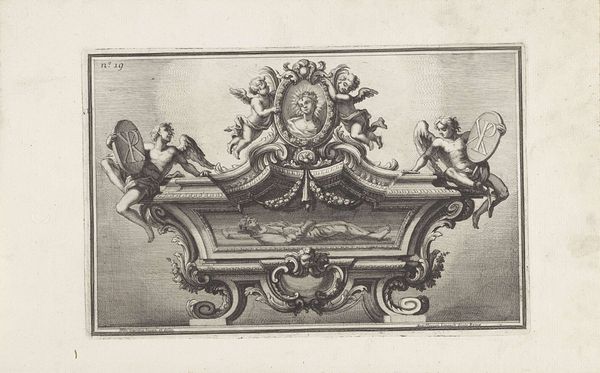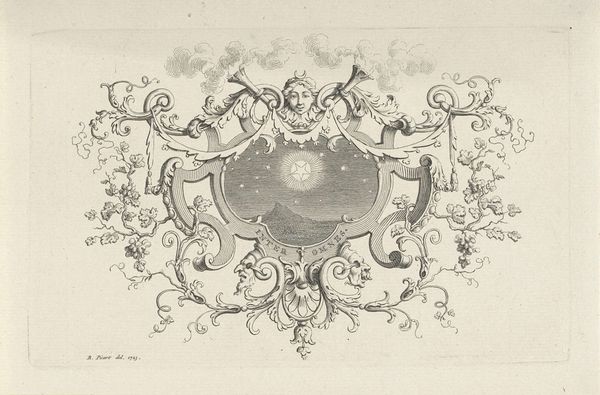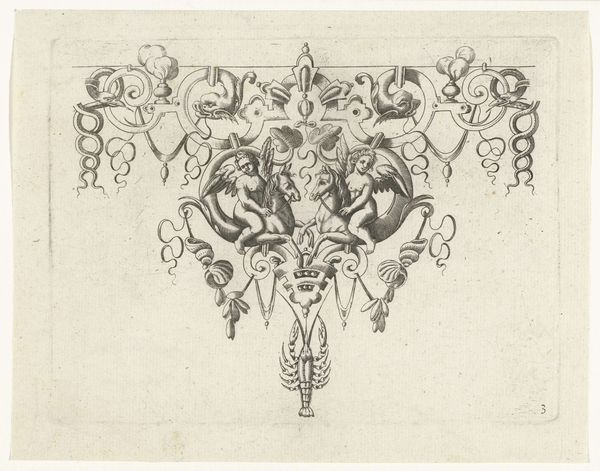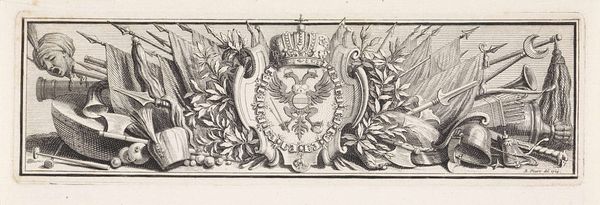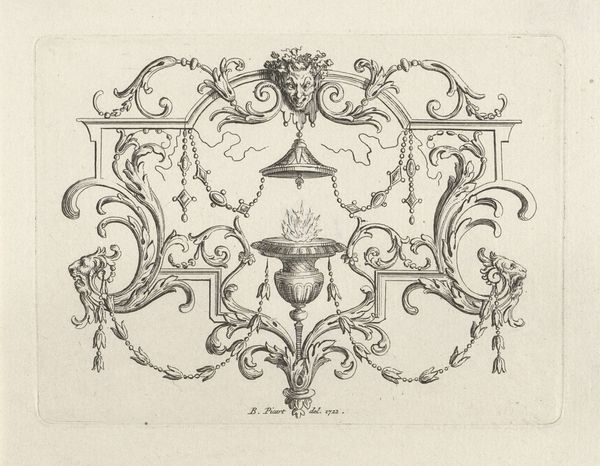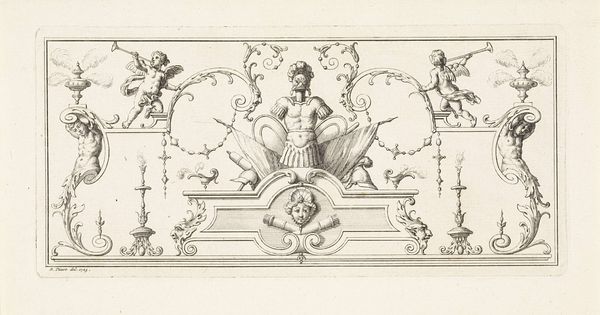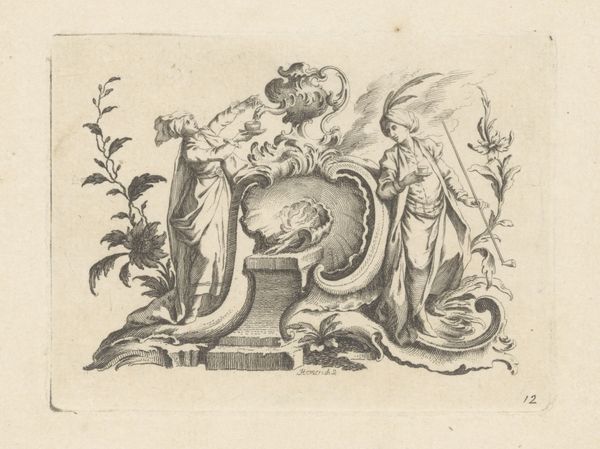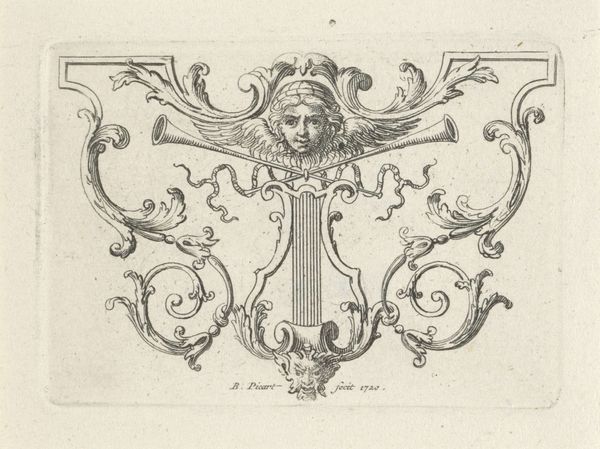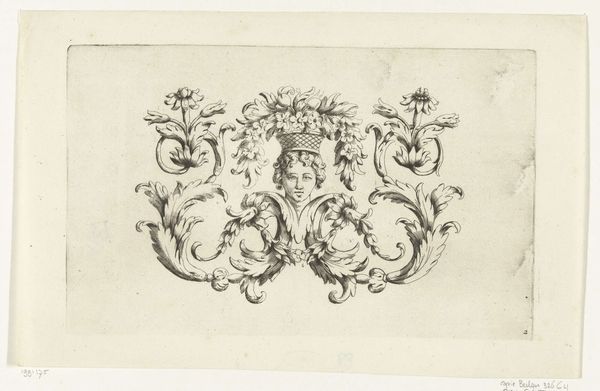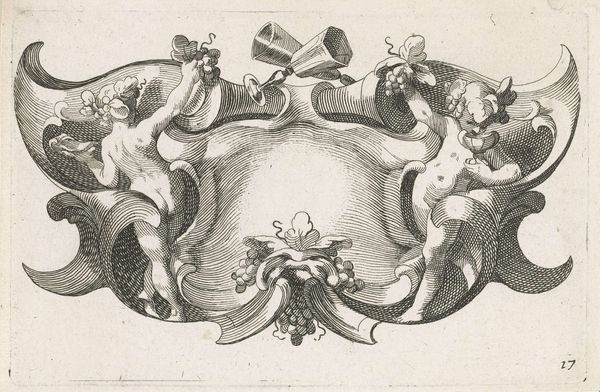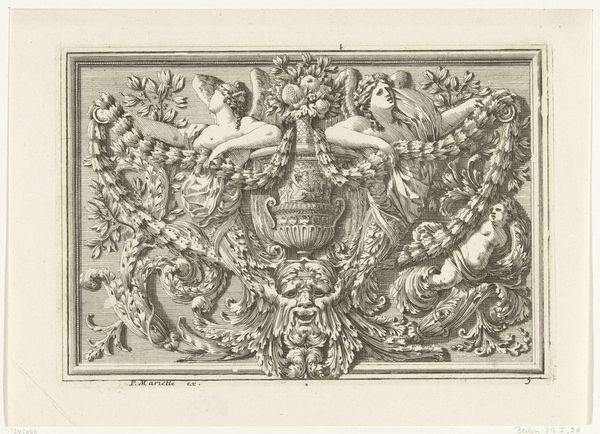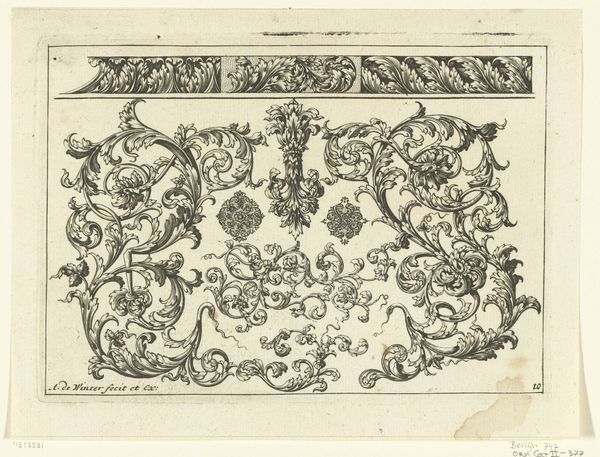
drawing, graphic-art, engraving
#
drawing
#
graphic-art
#
baroque
#
form
#
line
#
engraving
Dimensions: height 83 mm, width 177 mm
Copyright: Rijks Museum: Open Domain
Editor: This engraving by Bernard Picart, titled "Vignet met vaatwerk, een mascaron, bladranken en bloemen," made around 1725, features a whole array of vessels and plantlife in monochrome tones. It feels intensely ornamental, and I'm drawn to the contrast between the meticulously detailed objects and the wispy foliage. How would you interpret this work? Curator: What strikes me is the role of this print as a commodity. Engravings like this weren't just art objects; they were tools, models for artisans and craftsmen. Consider the labor involved—the engraver's skill in translating a design into a reproducible format. How does this change your perspective on its "ornamental" feeling? Editor: That's fascinating! Thinking about it as a blueprint for other makers makes the precise linework even more impressive. So, it's less about artistic expression and more about functional design, intended for mass production. Curator: Precisely. We have to remember that objects depicted here were desired, sought after and probably not accessible for the average person, thus heightening their ornamental appeal. Consider how the 'high art' of design informs and relies on the 'low art' of production and application in objects of status and consumption. Where do you see those class distinctions play out here? Editor: I see it in the use of classical motifs—the mascaron, the urns—things that would have been associated with wealth and education at the time. By reproducing them, Picart is, in a way, democratizing access to these symbols of status, even if only visually. I had been focusing solely on the aesthetic qualities, now I see how intertwined art, craft, and commerce really were. Thanks for broadening my understanding! Curator: My pleasure!
Comments
No comments
Be the first to comment and join the conversation on the ultimate creative platform.
